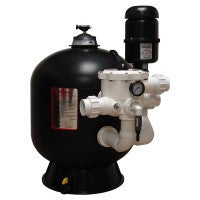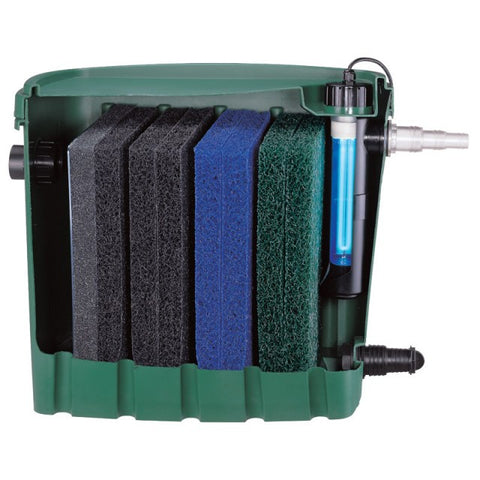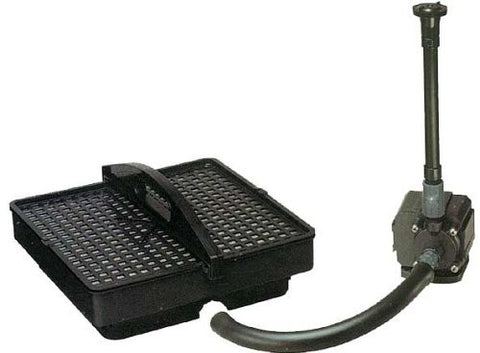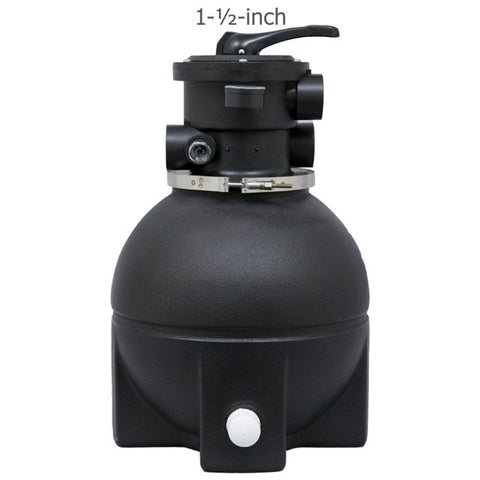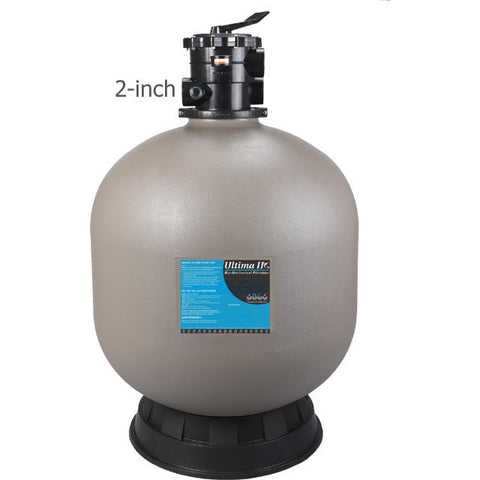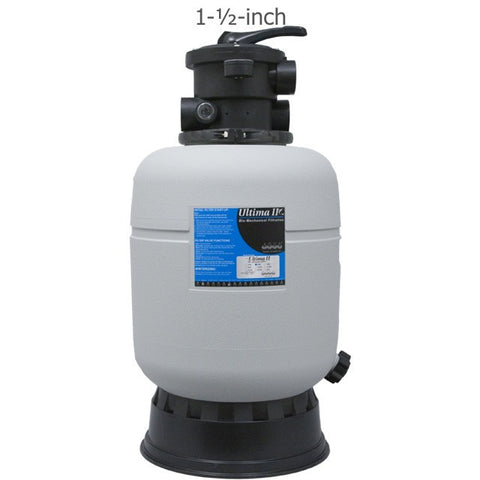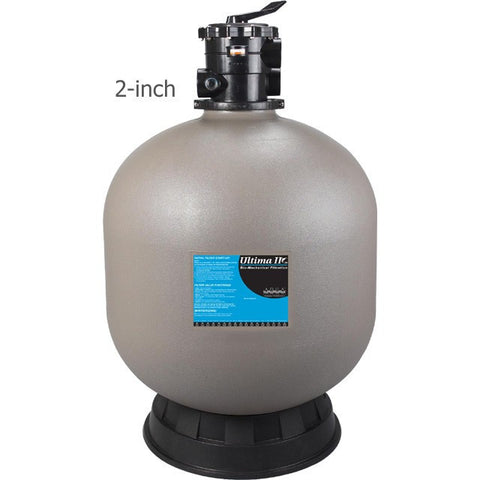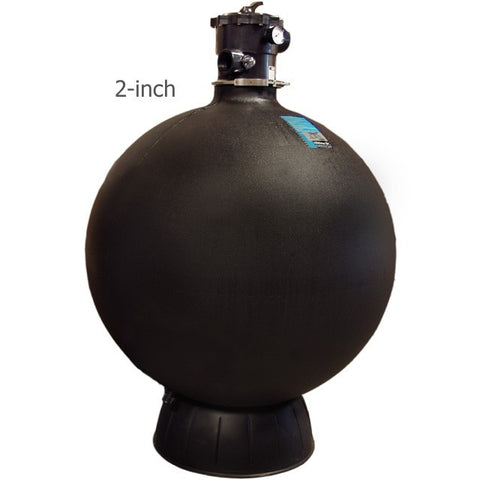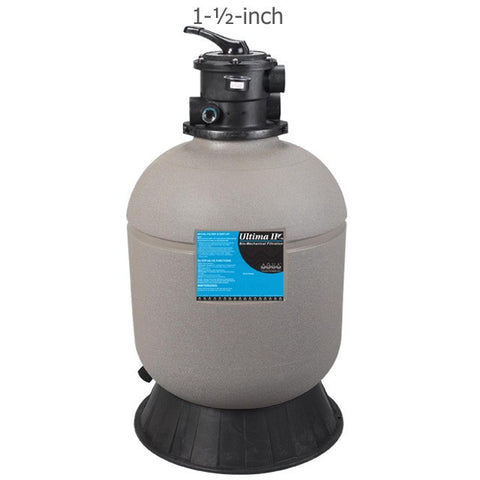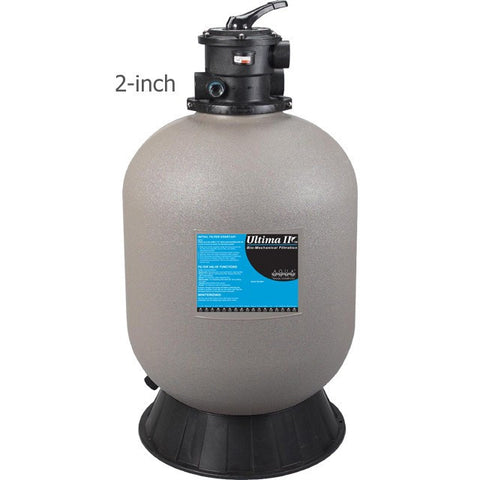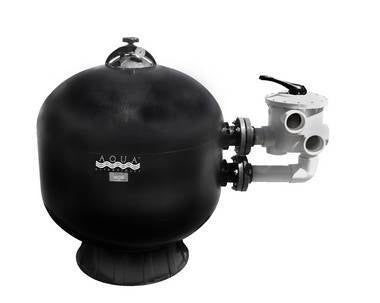Filtration
Koi Pond Filtration:
Clear water does not necessarily mean clean water, it may contain colorless impurities, such as ammonia and nitrite, that are harmful and even lethal to Koi.
Mechanical filtration of a Koi pond.
Most Koi pond filter media have a mechanical function. Settlement chambers allow gravity to drag the solid waste out of the water by slowing the water flow. Such chambers usually come first in a filter.
A vortex unit provides greater settlement, the water moves in a circular movement allowing soLid to gather in the center where they can be removed. In addition to baffle plates which slow the incoming water, brushes or matting can be used to strain the water.
Biological filtration of a Koi pond.
This relies on specific bacteria to break down toxic waste products to less harmful substances. There are two stages in the breakdown of ammonia, each stage involving different types of bacteria. The first stage is the breakdown of ammonia to nitrite by nitrifying bacteria, most important of which is Nitrosomonas. The second stage is the conversion of nitrite to nitrate by Nitrobacter.
Both of these groups of bacteria are aerobic (needing oxygen to live), sediment building up in the filter will deplete the oxygen levels so it is important to keep sediment to a minimum by having a settlement chamber first and by cleaning the filter out occasionally (but not using tap water as the chlorine will kill the bacteria).
A variety of different media are available to put in the filter, materials such as gravel, matting, hair rollers, foam, and canterbury spar are all suitable as they provide lots of surfaces for the bacteria to live on.
A biological filter will take weeks or months to mature, cultures of nitrifying bacteria are widely available and will speed up the process.
Chemical filtration of a Koi pond.
Activated carbon removes ammonia and other organic waste products by adsorption, this means that the waste substances become linked to the surface of the carbon. When the surface is 'full up' it has to be replaced.
Zeolite removes ammonia and nitrite from the water. A good feature of Zeolite is that it can be cleaned by soaking in salt water (6g per litter) for 24 hours and then reused.
If a large biological filter is present chemical filtration should not be needed, but it is good to use while the biological filter is maturing or isn't big enough for the pond.
Sand filter. Some Koi keepers use a sand filter as a final stage to 'polish' the water. The water is passed under high pressure through sand and comes out very clear, bacterial activity also takes place in the sand filter. Sand filters are expensive though, and you can't make one yourself because of the high pressure involved.
Controlling algae in your Koi pond.
Biological filtration turns ammonia into nitrate which is harmless to fish (unless at extremely high levels) but the disadvantage of this is that algae love nitrate and you get an algae bloom. There are two types of algae problems, green water and blanket weed. Green water is caused by microscopic algae in the water, it is not harmful to Koi, actually it is beneficial, the Koi eat the algae and it enhances their color, but you can't see them!
Also in summer the algae use oxygen and leave the fish gasping. There are various ways to get rid of the algae : a vegetable filter, plants will use the nitrate so it is not available for the algae; an ultra violet (UV) filter kills the algae as it passes through; algaecide chemicals can be used but the problem will just recur; magnets placed on the filter pipe will disrupt algae cells internally, killing them or preventing them reproducing. Blanket weed is filaments algae and forms long green strands, it is not really a problem, it uses up nitrate and stops green water occurring, but it is unsightly. Vegetable filtration, algaecides and magnets will all work on blanket weed, but UV filtration will not as the algae has to pass through the filter to be killed and blanket weed is attached to the pond walls.
Cleaning your Koi pond filter.
Filters need to be cleaned occasionally to remove sediment, take this into account when building one. Add a bottom drain to each filter chamber so that sediment can be let out, it makes cleaning much easier. Another thing that makes cleaning easier is to put filter medium in net bags, not just pour it in all at once, as it can then be more easily removed, one bag at a time.
One last important thing, never ever put tap water in a mature filter, it will kill all the bacteria and you will have to let it mature all over again.

